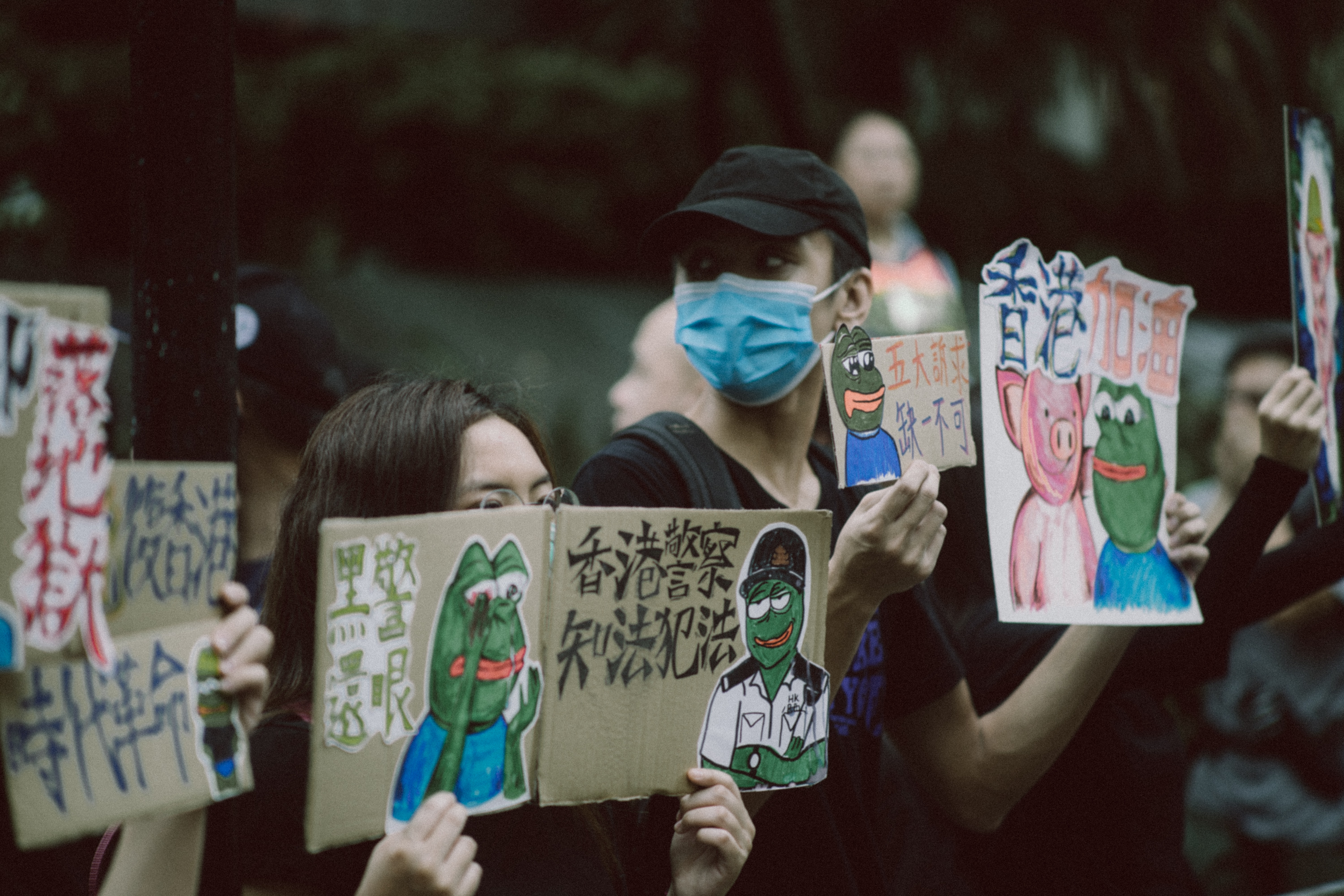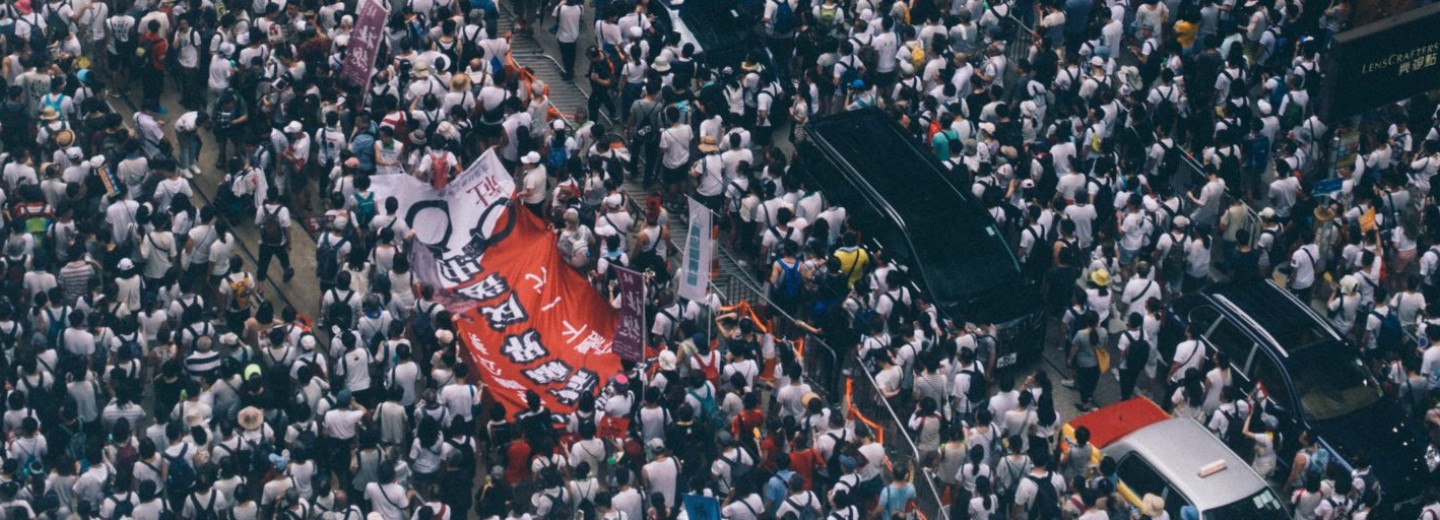Headlines in Western journals – “Sunday 18th August 2019 – Hong Kong: 1.7m people defy police to March in pouring rain”
“An estimated 1.7 million people in Hong Kong – a quarter of the population – defied police orders to stage a peaceful march after a rally in a downtown park.” The number is both wrong and impossible. The media has repeated this figure many times since. Quoting it is lazy and distorted journalism.
Here are the facts
Victoria Park, where the rally gathered, is 19 hectares – 190,000 square metres – which includes lakes and flower beds. If every protestor occupied one square metre (physically impossible), there would be 190,000 protestors in the Park. The distance from the Park to Admiralty, the destination of the march, is 3.6 kilometres. The average street width is around 50 metres.
If protestors occupied the distance from the Park to Admiralty at a rate of one per square metre, the streets could hold 180,000 protestors. So, if all the streets and the Park were occupied at the same time, there could have been 370,000 protestors. Let us double that for side streets and those who moved on. All the protestors together could not possibly number more than 740,000.
That is one tenth of the population of Hong Kong. 90% were NOT protesting then – or on any other occasion. Yet this figure is still repeated each time the subject comes up.
So, what about that 90%? How have they felt? How are they feeling now? During a four-week business trip in October and November, I wrote some impressions for my family.

I have searched, in vain so far, for a whiff of tear-gas, blood-soaked police officers, or blue-died youths (the colour used in Police water cannons). I have found none of these. There is little physical evidence to show for what the media has portrayed as the most violent period in Hong Kong’s history since 1967. Then 45 people were killed, and thousands imprisoned in their attempt to drive out the British. Today, China is the target; the PRC flag is being defaced and the Union Jack waved as a symbol of freedom. As always in Hong Kong, the physical mess and damage is cleaned up almost at once; a night-time of violence vanishes with the dawn, when life resumes normality.
Except that it does not.
Families are divided, office gossip is bland and personal opinions, if ever expressed, are muttered softly behind a hand. “We don’t talk about the protests”, people say, “because we do not know what other people believe. If we get it wrong, we, or our families, may be targeted and beaten.”
This is the saddest part of all.
Fear is complicated by the factions. Blue shirts mean you support the Hong Kong Police. Yellow, that you are a Hong Kong democrat. Black that you are a hard-line activist prepared to be violent to make your point. (A shipment of black-themed fashion shirts was banned entry into Hong Kong last week). White shirts may be Triads or supporters of hard-line PRC views. And then there are the Taiwanese (who have great interest in Hong Kong); the people from Fujian province (who came to Hong Kong for peace and prosperity), and so on.
Most believe that the USA is funding the protest movement to embarrass China. Still others see the hand of Taiwan and even elements of the PRC who have their own agendas. Probably all are partly true. But if the youths are seduced by paymasters, it is because they want to be; the slogans they cry and daub wherever they can, they believe in. It is romantic and makes them feel involved. They are doing dangerous, daring, things fighting for a noble cause against a brutal authority. Joan of Arc and Les Misérables must have felt the same.
The snag for the Establishment is that the protestors have a point.
The world has changed
Hong Kong is hard to govern because its Administration is both unable and unwilling to change. The Joint Declaration and Basic Law of 1984 mandated that Britain hand over Hong Kong unchanged in 1997. In return the PRC would keep it unchanged for the next 50 years.
Those commitments were agreed more than 35 years ago. So much has changed since then. The Hong Kong Government does not have an option to change – or believes it does not. It would be very difficult to change lives and structures involving 150,000 civil servants in any case. What turkey votes for Christmas? And so civil service values, structures and practices that may, possibly, have been valid in Colonial times, have barely changed.
This paralysis permeates every aspect of Government. Even full democracy might have made little difference. ‘One country, two systems’ for 50 years is not – and was never with hindsight – sustainable.
If the youth of Hong Kong is dismayed about the future – what potentially does that hold for them?
Over 80 million people live here – double the population of California. Its GDP is US$ 1.5 trillion – roughly the same as that of South Korea. Each part of the area has its own speciality. Hong Kong focuses on finance and tourism, Shenzhen on hi-tech, Donguan manufacturing, Macau gambling and so on.
Yet, despite the obvious benefits to Hong Kong, this concept scares many young people in Hong Kong. In 2047, will Hong Kong be absorbed into ‘yet another’ Chinese mega-city? How can its precious legal systems and traditions of free speech survive? Will not corruption spread into the City’s ‘pristine’ business environment?
The irony is that, 150 years ago, Hong Kong was all Chinese. Its population today is 98% Chinese. Mainland China has now surpassed Hong Kong in many aspects. It is inconceivable that a solution does not exist; one can envisage several.
Getting there will be a struggle; yet it will happen.
10 November – Tragedy
The week’s news is dominated by the tragic death yesterday of a student who fell from a car park during a protest. No-one knows exactly what happened. The video feed from the car park shows some events but not the fall itself. There will be an inquest, but it seems unlikely that anyone will be able allocate blame. It was a tragic accident.
Even sadder, the death leads to yet more accusations. The protestors believe he was running away from vicious and unnecessary police tear-gas. The police point out that that protest’s objectives were to disrupt the wedding of a young police officer. Depending on their point of view, journalists and protagonists leave out facts that do not suit their case. Perhaps this tragedy will cause both sides to reflect.
‘…to be continued”
Worked on the article:

Wanlikhang





